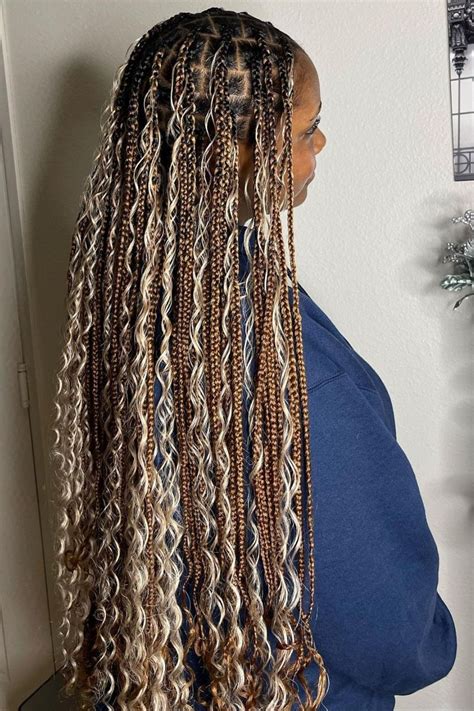Introduction
Human hair braids, an ancient art form, have evolved into a vibrant expression of cultural heritage and personal style. With their intricate designs and endless versatility, braids captivate hearts and inspire creativity worldwide.

The Global Braid Economy
According to the International Hair Braiding Association (IHBA), the global hair braiding industry generates an estimated $8 billion annually. This figure is expected to grow exponentially in the coming years as the demand for natural hair extensions and protective styling techniques increases.
5 Types of Braids to Spice Up Your Style
Braids come in a kaleidoscope of patterns, each with its unique charm:
-
Cornrows: Tightly woven rows that run parallel to the scalp, creating a sleek and polished look.
-
Box Braids: Square-shaped braids that exude volume and dimension, perfect for adding length and fullness.
-
French Braids: An elegant three-strand braid that starts at the crown and descends over the head.
-
Fishtail Braids: A delicate and intricate weave that resembles the scales of a fish, creating a feminine and whimsical touch.
-
Dutch Braids: A variation of the French braid where the strands are pulled over instead of under, giving a raised and voluminous effect.
4 Innovative Braid Applications
The versatility of human hair braids extends beyond traditional hairstyles, inspiring novel applications:
-
Hair Extensions: Braids can be used to add instant length, volume, and color to natural hair.
-
Protective Styling: Braids offer a protective shield against heat damage, breakage, and hair loss.
-
Braided Hair Sculptures: Braids can be transformed into intricate 3D artworks, showcasing the artistry of skilled braiders.
-
Fashion Accessories: Braids have become stylish accessories, adorned with beads, ribbons, and other embellishments.
4 Useful Tables on Braid Trends
| Trend | Description |
|---|---|
| Bohemian | Braids with loose and flowing tendrils, often adorned with feathers or beads. |
| Tribal | Braids inspired by indigenous cultures, featuring intricate patterns and vibrant colors. |
| Futuristic | Braids with unconventional shapes, colors, and textures, often incorporating metallic accessories. |
| Minimalist | Sleek and understated braids that emphasize clean lines and understated elegance. |
8 Effective Strategies for Mastering Braiding Techniques
-
Practice consistently: The key to mastering braiding is regular practice.
-
Choose the right tools: Use a fine-toothed comb, quality braiding hair, and a mirror for optimal precision.
-
Section hair properly: Divide hair into small, manageable sections to prevent tangles and ensure even distribution of tension.
-
Keep strands tight: Maintain consistent tension throughout the braiding process to create secure and long-lasting braids.
-
Seal the ends: Prevent fraying by sealing braid ends with a clear elastic or hairspray.
-
Accessorize creatively: Experiment with beads, ribbons, and other embellishments to add a touch of flair.
-
Protect braids at night: Wrap braids in a satin scarf or bonnet to prevent friction damage while sleeping.
-
Consider hair type: Different hair types require specific braiding techniques. Consult a professional braider for personalized guidance.
Tips and Tricks for Seamless Braiding
- Use a spray bottle to dampen hair slightly, making it easier to manage and prevent static.
- Start braiding with smaller sections near the roots to prevent slippage.
- Hold the center strand firm while weaving the outer strands to ensure a secure braid.
- Use a tail comb to smooth out any flyaways and create a polished finish.
- Tie braids off with a secure elastic or hair tie to keep them in place.
Common Mistakes to Avoid: Lesson Learned
- Braiding too tightly: Avoid excessive tension that can cause breakage and discomfort.
- Not prepping hair: Neglecting to detangle and moisturize hair before braiding can lead to tangles and breakage.
- Using the wrong braiding hair: Artificial or low-quality braiding hair can slip and cause frizziness.
- Over-brushing: Excessive brushing can create friction and damage braids.
- Sleeping with wet braids: Wet braids are more susceptible to breakage and damage.
Conclusion
Human hair braids are a testament to the timeless beauty and boundless creativity that lies within the art of hair styling. From intricate tribal designs to bold and futuristic interpretations, braids continue to captivate imaginations and inspire endless possibilities. Embrace the versatility of braids and unleash your inner stylist to create captivating and unforgettable looks.
